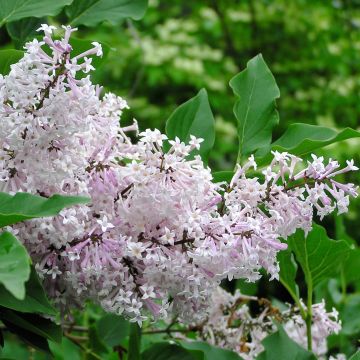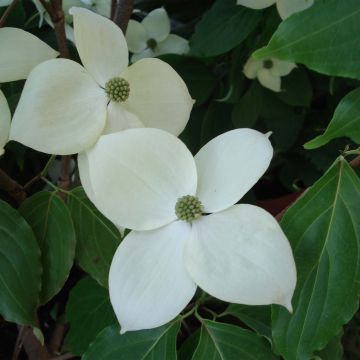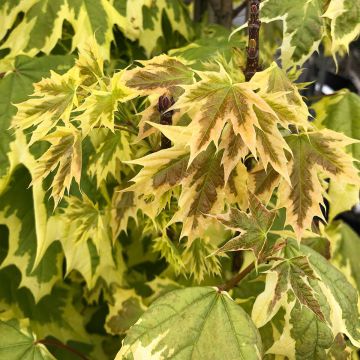Shipping country and language
Your country of residence may be:
Your country of residence is:
For a better user experience on our website, you can select:
Your shipping country:
Andorra
Austria
Belgium
Bulgaria
Canada
Chile
Croatia
Cyprus
Czechia
Denmark
Estonia
Finland
France
Germany
Greece
Hungary
Iceland
Ireland
Italy
Latvia
Lithuania
Luxembourg
Malta
Monaco
Netherlands
Poland
Portugal
Romania
Slovakia
Slovenia
Spain
Sweden
Switzerland
United Kingdom
We only deliver seed and bulb products to your country. If you add other products to your basket, they cannot be shipped.
Language:
French
German
Spanish
English
My Account
Hello
My wish lists
Plantfit
Log in / Register
Existing customer?
New customer?
Create an account to track your orders, access our customer service and, if you wish, make the most of our upcoming offers.


Senna corymbosa
Senna corymbosa
Senna corymbosa
Buttercup Bush, Flowery Senna, Argentine Senna
Order in the next for dispatch today!
Dispatch by letter from 3,90 €.
Delivery charge from 5,90 € Oversize package delivery charge from 6,90 €.
More information
This item is not available in your country.
Shipping country:
Andorra
Austria
Belgium
Bulgaria
Canada
Chile
Croatia
Cyprus
Czechia
Denmark
Estonia
Finland
France
Germany
Greece
Hungary
Iceland
Ireland
Italy
Latvia
Lithuania
Luxembourg
Malta
Monaco
Netherlands
Poland
Portugal
Romania
Slovakia
Slovenia
Spain
Sweden
Switzerland
United Kingdom
Schedule delivery date,
and select date in basket
This plant carries a 24 months recovery warranty
More information
We guarantee the quality of our plants for a full growing cycle, and will replace at our expense any plant that fails to recover under normal climatic and planting conditions.
From 5,90 € for pickup delivery and 6,90 € for home delivery
Express home delivery from 8,90 €.
Would this plant suit my garden?
Set up your Plantfit profile →
Description
Senna corymbosa, also known as Bush Senna, is a hardy shrub prized for its tropical appearance that creates themed scenes. It is medium sized, almost as wide as it is tall, with beautifully cut, vibrant green foliage that persists if the winter is mild. This Senna is especially appreciated for its bright yellow flowering that extends from mid-summer to autumn. It prefers sunny exposures, withstands dry conditions well and needs well-drained soil. It is hardy down to -8°C and can be grown in containers in regions with very cold winters, allowing it to be brought indoors when it freezes.
Senna is a member of the Fabaceae family (formerly known as Leguminosae), the third most prolific in terms of species (approximately 19,500!). It includes food and forage plants, as well as numerous ornamental plants such as Albizia, Wisteria, or Honey Locust. The Cassia and Senna genera, which have been subject to species reclassification from one to the other, together account for several hundred species. Cassia mainly consists of trees and shrubs, with a few herbaceous plants.
Senna corymbosa is native to Argentina and Uruguay, hence its common name of Argentine Senna. This evergreen shrub has a slightly upright habit but eventually forms a ball shape that is almost as wide as it is tall. It generally reaches 2m high with a spread of 1.75m but can grow up to 3m tall or even taller under favourable conditions. You can prune it to the shape of a small tree with a short trunk. It has beautiful compound leaves with an even number of leaflets (often 8), arranged in pairs on either side. The leaves are a vibrant green, slightly glossy, and often give it a slightly tousled appearance as they spread in all directions.
During July, earlier or later depending on the geographical area, very bright yellow flowers appear, which pleasantly contrast with the darker foliage. The small flowers (about 3sm) are simple but abundant, with 5 petals and vaguely resembling buttercups. They bloom from July to October or even November, making this one of the best flowering shrubs for late summer.
It is slightly hardier than the neighbouring species Cassia x floribunda and once rooted, can withstand temperatures down to -8°C and sometimes -10°C, provided it is planted in very well-drained soil. It also withstands dry conditions very well and appreciates full sun, making it a valuable plant for the Mediterranean coast, where it is abundantly planted. It will also survive on the Atlantic coast, but elsewhere it should be kept in containers and overwintered during the cold season.
Senna corymbosa will be perfect for creating an exotic scene in mild climates, with other plants whose silhouette evokes distant lands. Caesalpinia gilliesii, or Bird of Paradise, with its finely cut foliage and yellow flowers with long red stamens, will be a great companion. Callistemon, the famous bottlebrush with flowers that come in red, purple, or white depending on the variety, will also be well-suited alongside your Cassia. And to add a touch of blue, Plumbago capensis or Solanum rantonetti will be well-adapted in milder climates.
Plant habit
Flowering
Foliage
Botanical data
Senna
corymbosa
Fabaceae (Caesalpinioideae)
Buttercup Bush, Flowery Senna, Argentine Senna
Senna corymbosa, Cassia bonariensis
South America
Other Shrubs A to Z
Planting and care
Senna coymbosa is best planted in spring, in April, in a very sunny and sheltered position. Autumn planting is only for regions with a very mild climate, which allows it to benefit from autumn and winter rains. This bush is undemanding on the nature of the soil, which must however be well-drained, as it dislikes excess water. As it tolerates drought well, watering is not necessary when grown in open ground once the plant is well established, but occasional watering promotes flower formation. Prune in spring to remove branches that have suffered from the cold, and at the end of flowering to rebalance the shape of the bush. This Senna can withstand temperatures as low as -7°C, or even a little lower, once well rooted, and in dry conditions (moisture amplifies the effects of frost). Outside the coastal Mediterranean area, when it starts to freeze, it is a good idea to place thick mulch at its base and cover it with a winter fleece during the coldest periods.
Whwn grown in a pot, repot in a large container every two years, in spring. Water occasionally, the root ball should not dry out completely. In cold regions, it will be overwintered in a bright and cool place, but frost-free.
Planting period
Intended location
Care
This item has not been reviewed yet - be the first to leave a review about it.
Spring-flowering shrubs
Haven't found what you were looking for?
Hardiness is the lowest winter temperature a plant can endure without suffering serious damage or even dying. However, hardiness is affected by location (a sheltered area, such as a patio), protection (winter cover) and soil type (hardiness is improved by well-drained soil).

Photo Sharing Terms & Conditions
In order to encourage gardeners to interact and share their experiences, Promesse de fleurs offers various media enabling content to be uploaded onto its Site - in particular via the ‘Photo sharing’ module.
The User agrees to refrain from:
- Posting any content that is illegal, prejudicial, insulting, racist, inciteful to hatred, revisionist, contrary to public decency, that infringes on privacy or on the privacy rights of third parties, in particular the publicity rights of persons and goods, intellectual property rights, or the right to privacy.
- Submitting content on behalf of a third party;
- Impersonate the identity of a third party and/or publish any personal information about a third party;
In general, the User undertakes to refrain from any unethical behaviour.
All Content (in particular text, comments, files, images, photos, videos, creative works, etc.), which may be subject to property or intellectual property rights, image or other private rights, shall remain the property of the User, subject to the limited rights granted by the terms of the licence granted by Promesse de fleurs as stated below. Users are at liberty to publish or not to publish such Content on the Site, notably via the ‘Photo Sharing’ facility, and accept that this Content shall be made public and freely accessible, notably on the Internet.
Users further acknowledge, undertake to have ,and guarantee that they hold all necessary rights and permissions to publish such material on the Site, in particular with regard to the legislation in force pertaining to any privacy, property, intellectual property, image, or contractual rights, or rights of any other nature. By publishing such Content on the Site, Users acknowledge accepting full liability as publishers of the Content within the meaning of the law, and grant Promesse de fleurs, free of charge, an inclusive, worldwide licence for the said Content for the entire duration of its publication, including all reproduction, representation, up/downloading, displaying, performing, transmission, and storage rights.
Users also grant permission for their name to be linked to the Content and accept that this link may not always be made available.
By engaging in posting material, Users consent to their Content becoming automatically accessible on the Internet, in particular on other sites and/or blogs and/or web pages of the Promesse de fleurs site, including in particular social pages and the Promesse de fleurs catalogue.
Users may secure the removal of entrusted content free of charge by issuing a simple request via our contact form.
The flowering period indicated on our website applies to countries and regions located in USDA zone 8 (France, the United Kingdom, Ireland, the Netherlands, etc.)
It will vary according to where you live:
- In zones 9 to 10 (Italy, Spain, Greece, etc.), flowering will occur about 2 to 4 weeks earlier.
- In zones 6 to 7 (Germany, Poland, Slovenia, and lower mountainous regions), flowering will be delayed by 2 to 3 weeks.
- In zone 5 (Central Europe, Scandinavia), blooming will be delayed by 3 to 5 weeks.
In temperate climates, pruning of spring-flowering shrubs (forsythia, spireas, etc.) should be done just after flowering.
Pruning of summer-flowering shrubs (Indian Lilac, Perovskia, etc.) can be done in winter or spring.
In cold regions as well as with frost-sensitive plants, avoid pruning too early when severe frosts may still occur.
The planting period indicated on our website applies to countries and regions located in USDA zone 8 (France, United Kingdom, Ireland, Netherlands).
It will vary according to where you live:
- In Mediterranean zones (Marseille, Madrid, Milan, etc.), autumn and winter are the best planting periods.
- In continental zones (Strasbourg, Munich, Vienna, etc.), delay planting by 2 to 3 weeks in spring and bring it forward by 2 to 4 weeks in autumn.
- In mountainous regions (the Alps, Pyrenees, Carpathians, etc.), it is best to plant in late spring (May-June) or late summer (August-September).
The harvesting period indicated on our website applies to countries and regions in USDA zone 8 (France, England, Ireland, the Netherlands).
In colder areas (Scandinavia, Poland, Austria...) fruit and vegetable harvests are likely to be delayed by 3-4 weeks.
In warmer areas (Italy, Spain, Greece, etc.), harvesting will probably take place earlier, depending on weather conditions.
The sowing periods indicated on our website apply to countries and regions within USDA Zone 8 (France, UK, Ireland, Netherlands).
In colder areas (Scandinavia, Poland, Austria...), delay any outdoor sowing by 3-4 weeks, or sow under glass.
In warmer climes (Italy, Spain, Greece, etc.), bring outdoor sowing forward by a few weeks.













